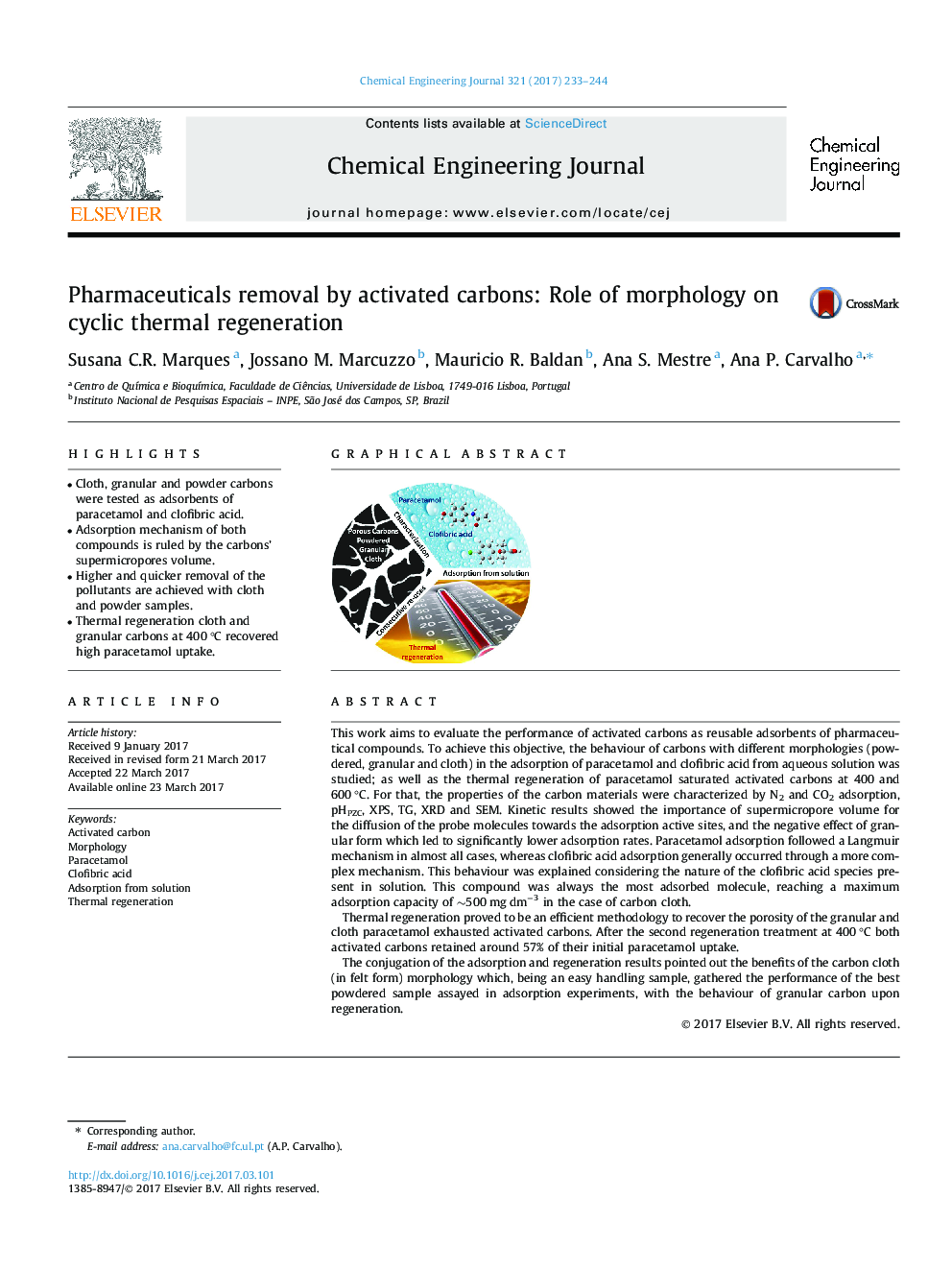| کد مقاله | کد نشریه | سال انتشار | مقاله انگلیسی | نسخه تمام متن |
|---|---|---|---|---|
| 6465792 | 1422957 | 2017 | 12 صفحه PDF | دانلود رایگان |
- Cloth, granular and powder carbons were tested as adsorbents of paracetamol and clofibric acid.
- Adsorption mechanism of both compounds is ruled by the carbons' supermicropores volume.
- Higher and quicker removal of the pollutants are achieved with cloth and powder samples.
- Thermal regeneration cloth and granular carbons at 400 °C recovered high paracetamol uptake.
This work aims to evaluate the performance of activated carbons as reusable adsorbents of pharmaceutical compounds. To achieve this objective, the behaviour of carbons with different morphologies (powdered, granular and cloth) in the adsorption of paracetamol and clofibric acid from aqueous solution was studied; as well as the thermal regeneration of paracetamol saturated activated carbons at 400 and 600 °C. For that, the properties of the carbon materials were characterized by N2 and CO2 adsorption, pHPZC, XPS, TG, XRD and SEM. Kinetic results showed the importance of supermicropore volume for the diffusion of the probe molecules towards the adsorption active sites, and the negative effect of granular form which led to significantly lower adsorption rates. Paracetamol adsorption followed a Langmuir mechanism in almost all cases, whereas clofibric acid adsorption generally occurred through a more complex mechanism. This behaviour was explained considering the nature of the clofibric acid species present in solution. This compound was always the most adsorbed molecule, reaching a maximum adsorption capacity of â¼500 mg dmâ3 in the case of carbon cloth.Thermal regeneration proved to be an efficient methodology to recover the porosity of the granular and cloth paracetamol exhausted activated carbons. After the second regeneration treatment at 400 °C both activated carbons retained around 57% of their initial paracetamol uptake.The conjugation of the adsorption and regeneration results pointed out the benefits of the carbon cloth (in felt form) morphology which, being an easy handling sample, gathered the performance of the best powdered sample assayed in adsorption experiments, with the behaviour of granular carbon upon regeneration.
116
Journal: Chemical Engineering Journal - Volume 321, 1 August 2017, Pages 233-244
